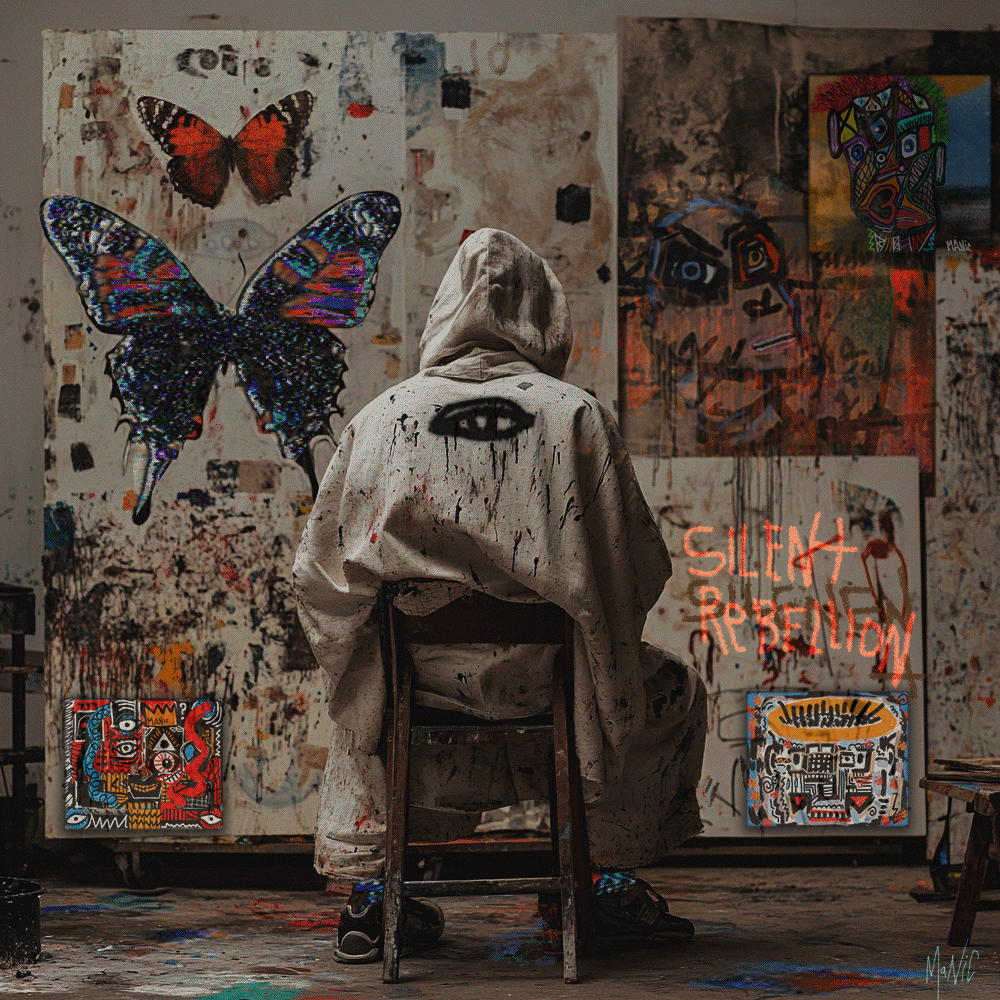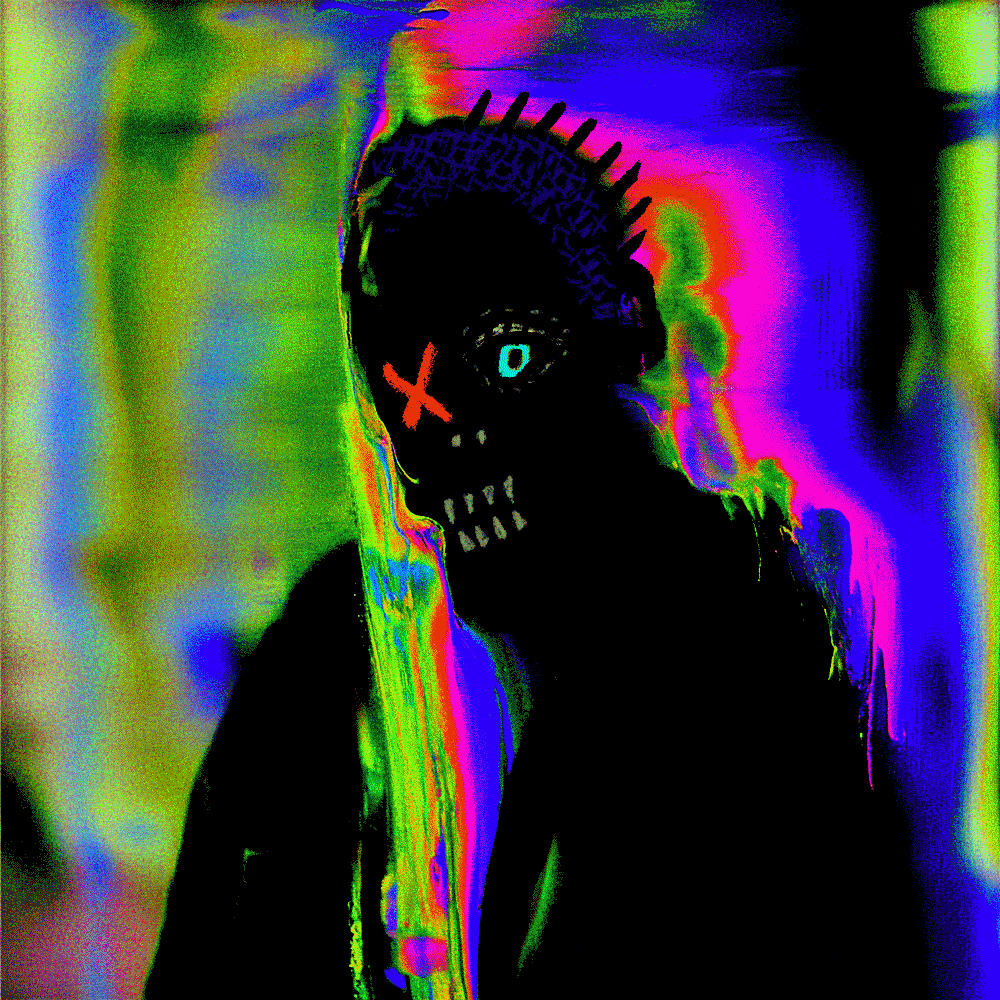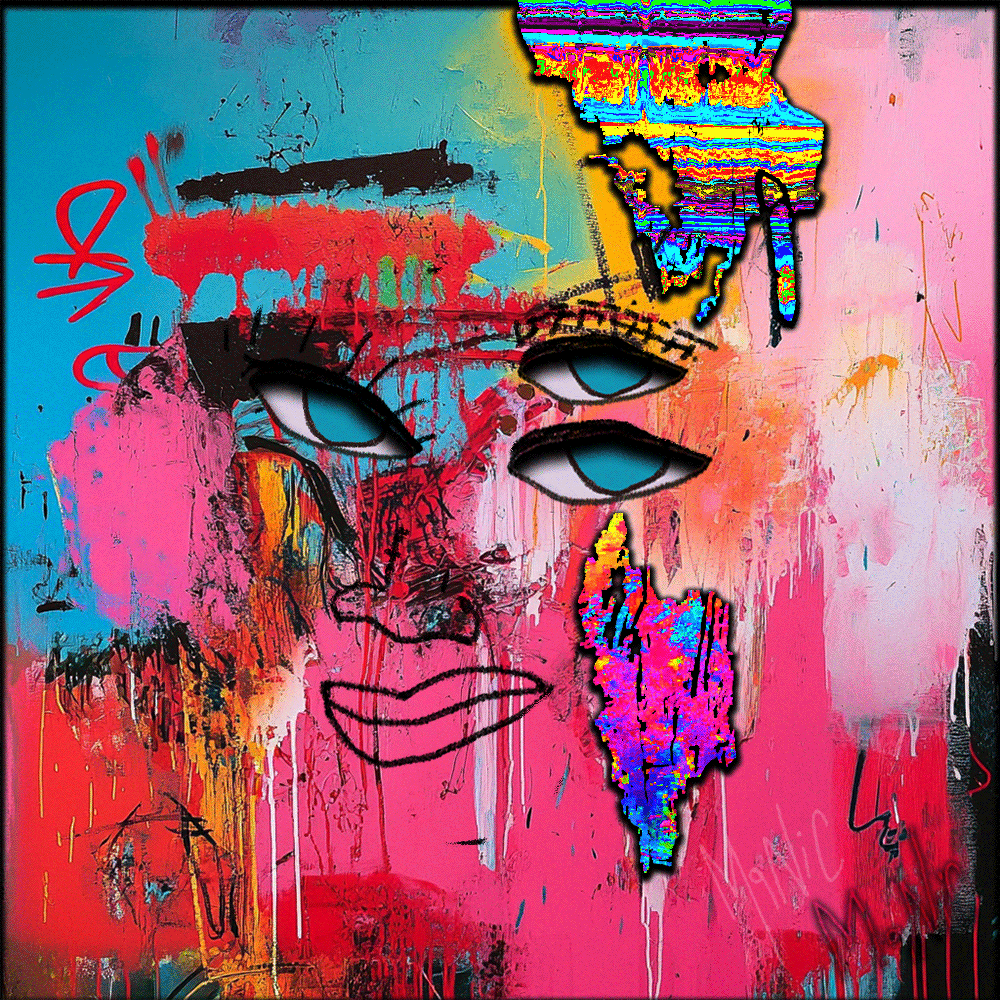Manic: From the Edge of Darkness
October 2, 2025
Few artists embody the uncompromising spirit of this space like Manic. His name itself is a declaration, a testament to resilience, a reflection of the battles he has fought and won. Through it all, he never lost belief in himself. That conviction has carried him to build a career now recognized by some of the biggest names in digital art and culture, including XCOPY, Beeple, and Raoul Pal.
But his story is not just about triumph. It is about survival, grit, and a relentless belief that art can be the lifeline when everything else is falling apart.
Early Struggles
Manic’s journey began in turmoil. Diagnosed with bipolar I at sixteen, the most severe form of the condition, his adolescence and early adulthood were marked by instability. “I went through hell. I did drugs, mainly cocaine. I was in and out of rehabs and mental hospitals for years.”
The illness brought manic highs, long stretches without sleep, and eventually full-blown psychosis. He describes being committed to state hospitals for months at a time, places where patients often never left. “It was terrifying. I had a roommate who killed himself. Traumatizing stuff. That was the bottom.”
In those bleak environments, the only outlet he had was creativity. Whenever he could, he asked for paper and pens, filling empty hours with sketches and lyrics. “It has to come out of me. It’s a compulsion. I’m a pure artist in every sense. I have to create.”
That raw compulsion to create would stay with him, even when nothing else did.
Redemption Through Love and Art
The first real anchor in his life was his wife. Meeting her pulled him away from the cycle of addiction and self-destruction. “She met me at my darkest and loved me anyway. That gave me something to live for.”
When he revealed his struggles and dependence on medication, she accepted him fully, a moment he describes as life-saving. For the first time, he had stability and a partner who believed in his potential.
That stability gave him space to return to art. Teaching himself CorelDraw and Photoshop, he began designing mixtape covers for friends. By 2020, his creativity collided with crypto. After seeing Beeple’s $69 million Christie’s sale, he was electrified. “Everybody told me: share your story. So I did.”
Clubhouse became his training ground, where he first sold NFTs after speaking openly about his past. Soon after, Twitter Spaces became his stage. “I was in thousands of spaces, grinding. No Plan B. This was it. I gave everything I had.”
Finding His Style
It was an early collector who first compared his work to XCOPY, a comparison that set him on a new path. At the time, he hadn’t even heard of the iconic glitch artist. “I didn’t even know who XCOPY was. Then I checked SuperRare and saw the animation, the glitch, the mouths moving, the eyes. I thought, this is dope. I want to do that but in my own style.”
Determined to master the craft, Manic taught himself frame-by-frame Photoshop animation, After Effects, and eventually AI tools like MidJourney and Stable Diffusion. He built a hybrid process that blended painting, collage, glitch, and animation into a signature style.
The results are frenetic, distorted, alive, portraits that vibrate with the same manic energy that once threatened to consume him. “Whatever tool I need, I’ll use it to make the vision in my mind real. I just go with my gut and do it.”
The Grind and the Breakthrough
But style alone wasn’t enough. The years that followed were grueling. By day, he worked junk removal and moving jobs to keep his family afloat. By night, he was on Twitter, pitching his art to rooms that often had only one or two listeners. “I’d be tossing garbage, gagging from the smell, while talking on Twitter about my art. Nobody knew.”
He gave away art for free, just to get noticed. “It was like handing out mixtapes. I just wanted people to see my art.” Even when sales dried up and rent loomed, quitting was never an option. He lost track of time, laser-focused on improving, often feeling defeated but always pushing forward. His mindset was simple: get so good they can’t ignore you.
Then, everything changed. Macro investor Raoul Pal followed him. Soon after, Blondie messaged him from Dubai: she and Pal had been looking at his work, listening to his interviews, and were deeply moved. They arranged a video call, collected his work, and Raoul later published a thread about him.
“They were in Dubai, looking at my SuperRare, listening to my podcast, and they reached out. We vibed. Next thing I know, they collected, and Raoul wrote a thread. Everything changed overnight.”
That thread ignited a frenzy. Forgotten works on Tezos and Solana sold out. Prices multiplied. After years of obscurity, Manic was suddenly one of the most talked-about artists in the space.
Recognition From Legends
For Manic, the sales were important, but the recognition from his heroes meant even more.
XCOPY collected his work and congratulated him directly. “To me, he’s a living legend. Getting that message was unreal.”
Beeple, the very artist whose sale first inspired Manic to enter NFTs, invited him to a CryptoPunks event and offered advice. “The guy whose sale got me into NFTs is now someone I can call. That’s crazy to me.”
These gestures, small as they may seem, validated years of struggle. They told Manic that not only had he “made it,” but that he now belonged among the very figures who had once inspired him from a distance.
The Art and The Mission
Today, Manic creates across digital and physical mediums. He paints obsessively, incorporating his canvases into digital pieces, creating hybrid works that live both online and in galleries. His passion for physical work is equal to his digital drive.
“I want my name in history books. I believe I’ll achieve it because I’ll outwork anyone.”
But at the heart of it all remains his family. The first time he made a meaningful sale, his joy came not from the ETH but from what it meant. “When I made my first sale, the only thing I was excited about was buying my son a bed. That’s the person I am. I just want to give my family a good life.”
Rising Like a Phoenix
From padded rooms and landfills to video calls with Beeple and messages from XCOPY, Manic’s story is nothing short of remarkable. He is the embodiment of the phoenix, rising from ashes that most people could never escape.
What makes him unique is not just his art, but his authenticity. He shares his struggles openly, bipolar, addiction, poverty, turning vulnerability into connection and stigma into strength.
As he says himself: “I always felt I was destined for greatness. Now I finally believe it.”
Join the discussion on Twitter…




